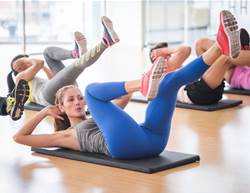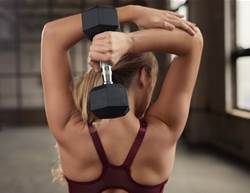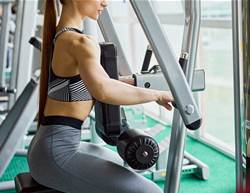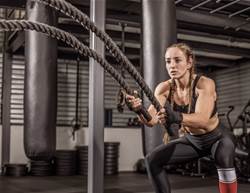There are few places more intimidating than the weight room. Gym enthusiasts seem to know exactly where to go and what to do, while the rest of us wander around, eventually landing on "quick start" on the treadmill because at least that we can figure out. Even though we know the benefits of strength training - greater bone density, lower cholesterol, reduced body fat - the whole process just seems so complicated. Three sets of eight reps or one set of 20? How long should breaks last? How often do I need to put myself through this to see results?
The good news is, your bodyweight and a set of dumbbells right at home will work just as well as all of the fancy stuff at the gym.
Here's The Plan:
- The strength-training program outlined below takes about 30 minutes. Do 12 repetitions of each of the following exercises, then rest for 30 seconds and gently stretch or massage the muscles you worked. Repeat for a total of three sets.
- Perform this routine three non-consecutive days per week (in conjunction with a healthy diet), and you'll see measurable changes in eight weeks. When the dumbbells start feeling easy, raise the weight you're using. Remember that lifting a challenging load won't bulk you up like a bodybuilder, and lifting dumbbells that are too light won't produce change in the muscles.
- Strength training creates tiny microscopic tears in the muscle fibres that allow them to grow back stronger - that's why you feel muscle soreness post-workout. The process of healing those tears takes 24-48 hours, so avoid doing this program on consecutive days. Allow 1-2 days between, and do cardio or stretching workouts (like this one) while your muscles heal. If you rarely or never experience this soreness, increase the weights you are lifting.
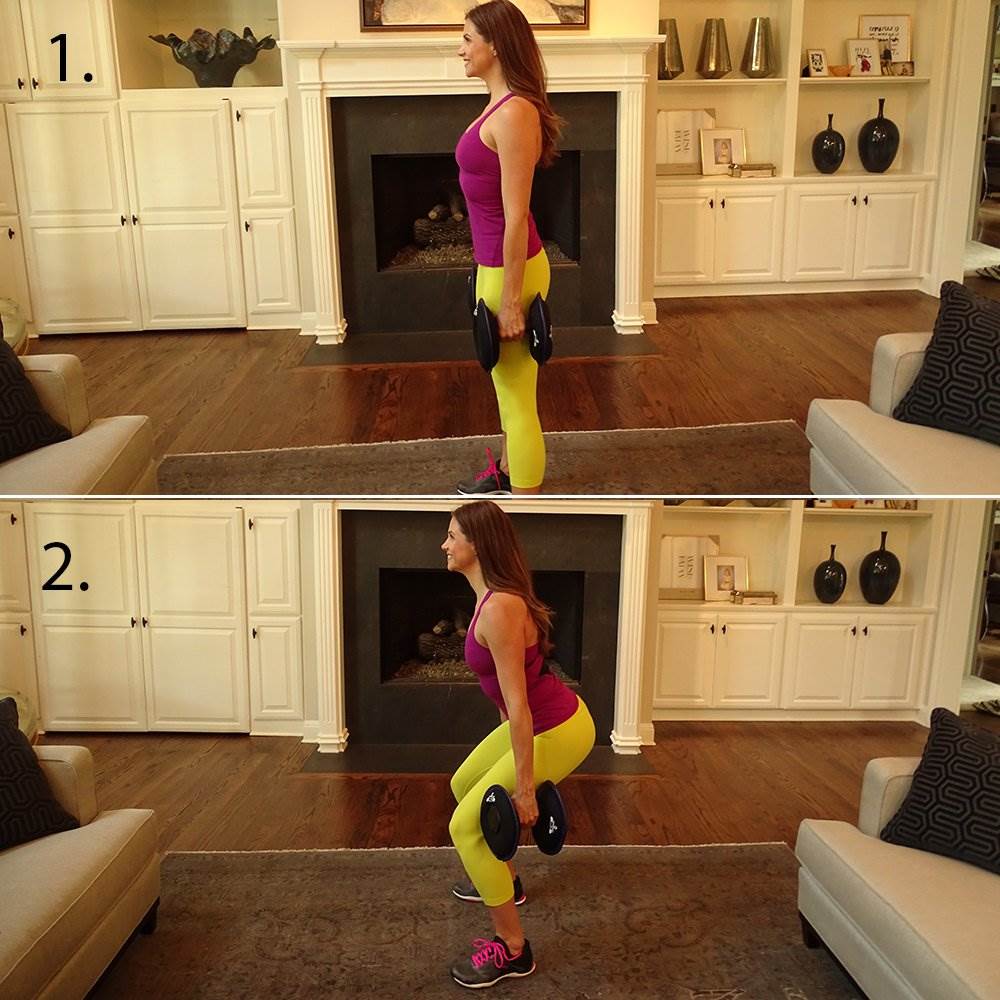
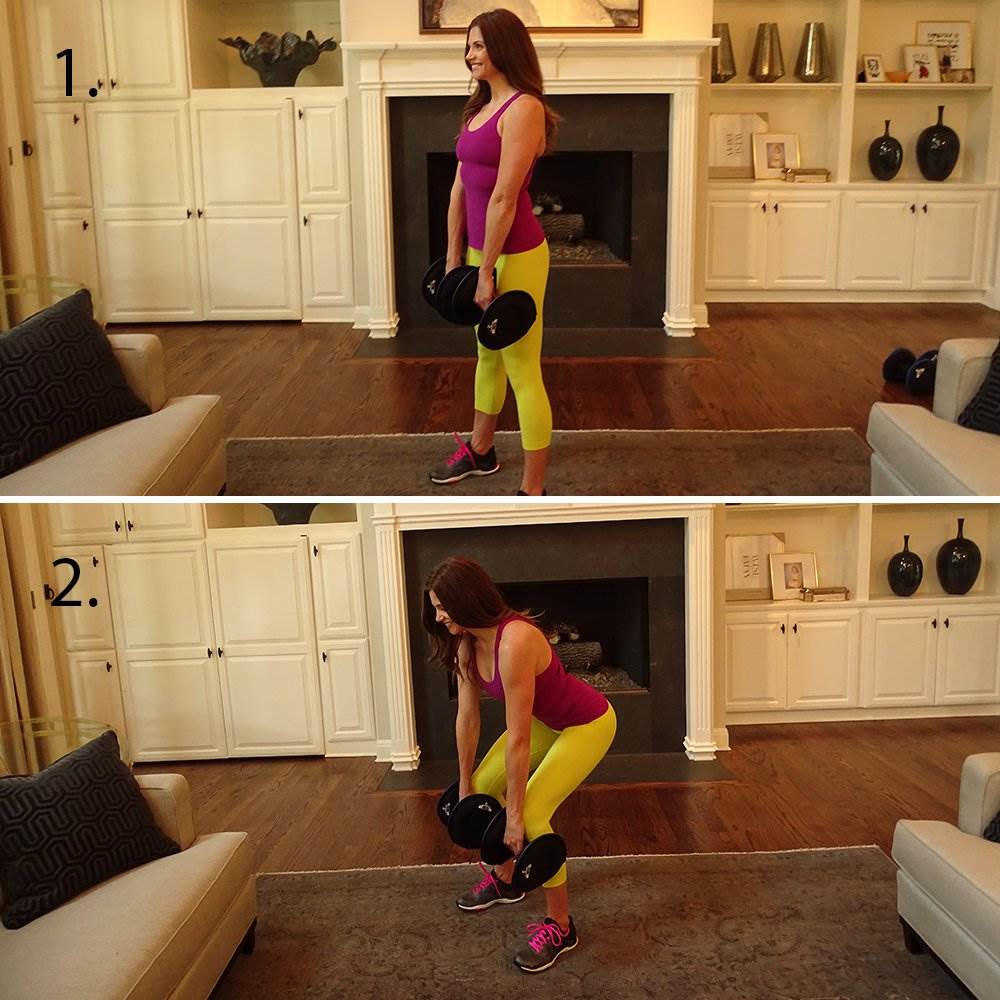
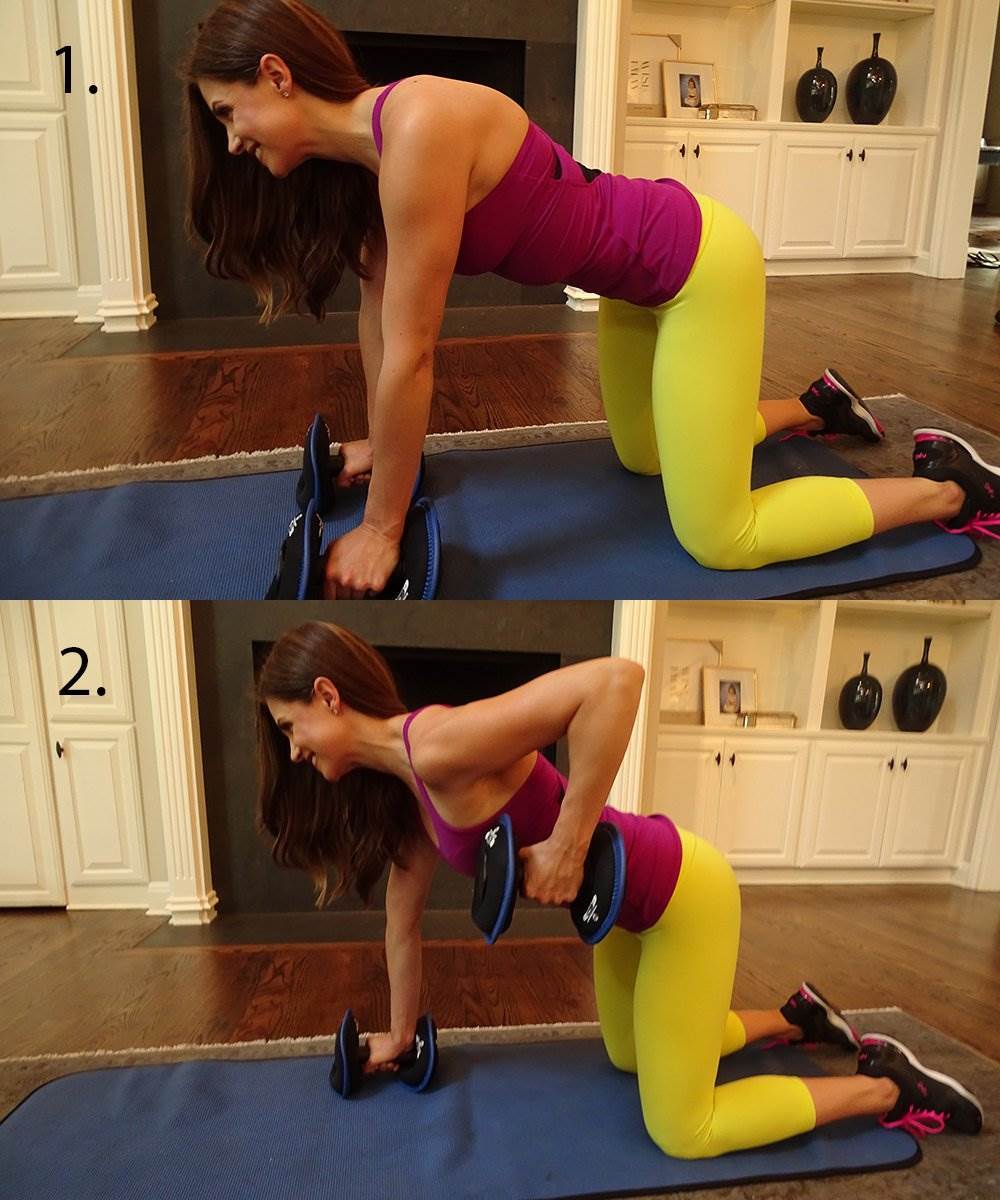

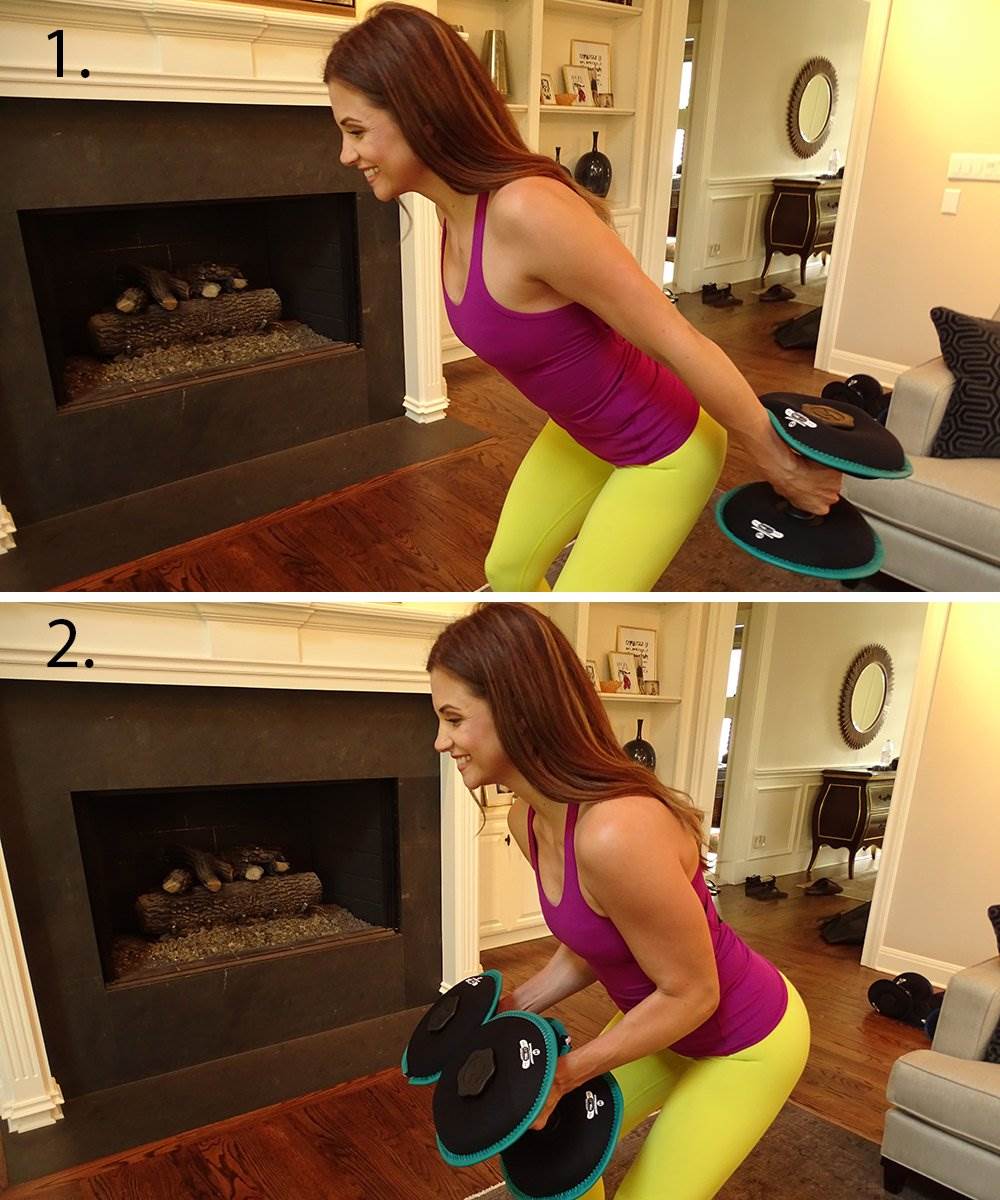
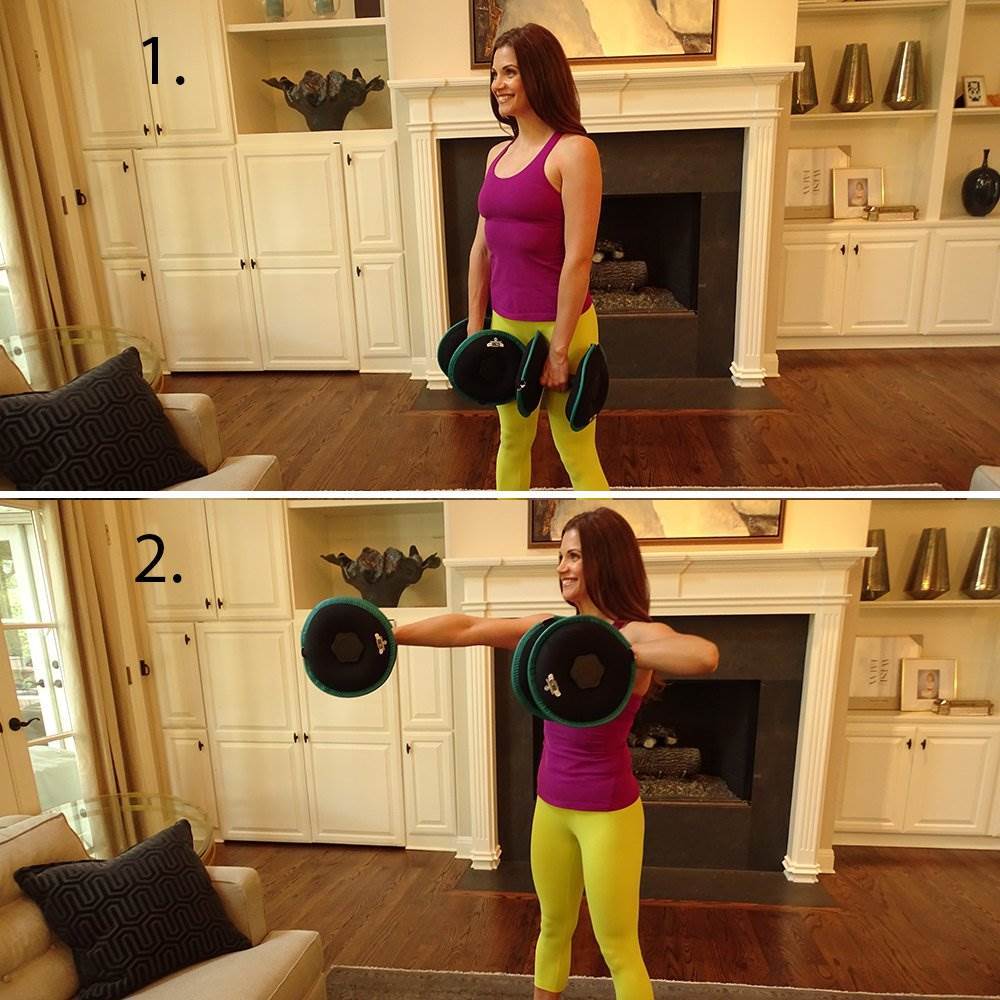
Photograph by Jennifer Lioy Belsher
Exercise 1: Squats
What It Works: Buttocks (glutes) and fronts of thighs (quads)
How-To: Stand tall with a heavy dumbbell in each hand, and rest the dumbbells on your outer thighs. Spread your legs hips-width apart and allow your toes to turn out as they would if you were standing naturally. Bend your knees and hips, tracking your knees in the same direction your toes are facing, and drop your tailbone down. Descend as low as you can in a squat without rounding your lower back. Keep your shoulders back, head high, and chest open throughout the range of motion. Once you reach the bottom of the squat, hold for 3 seconds, then quickly lift back up to start position and squeeze your buttocks tightly. Your shoulders should be directly over your hips, knees, and ankles at the top of your squat, abs tight and knees straight but not locked.
Photograph by Jennifer Lioy Belsher
Exercise 2: Dead Lifts
[description]What It Works: Buttocks (glutes), backs of thighs (hamstrings), and lower back
How-To: Stand tall with heavy dumbbells in both hands, this time resting them on the fronts of your thighs. With your legs hips-width apart, toes turned out naturally, bend your knees and pull your hips back like a slingshot. Make sure your knees track in the same direction as your toes. Draw your buttocks toward the back wall and feel your weight pull back into your heels, not the forefoot. Your back will transition to a horizontal position as you do this, and your ribcage will nearly rest on your thighs at the bottom of the dead lift. It is crucial to tighten your abs to prevent rounding your back and putting too much workload on the muscles of your lower back. Look about a metre in front of you on the ground to keep your head and neck in line with the rest of the spinal column. Hold that posture for 3 seconds, then quickly lift back up and squeeze your buttocks tightly. At the top of your deadlift, be sure to keep abs tight and knees straight, and look ahead with your shoulders directly in line with your hips, knees, and ankles.
Photograph by Jennifer Lioy Belsher
Exercise 3: Quadruped Rows
What It Works: Back, core, and fronts of arms (biceps)
How-To: On a mat or cushioned floor, position your body on "all fours" with hands underneath your shoulders and knees underneath your hips. Hold a medium dumbbell in each hand. Take one dumbbell to your ribcage, sliding that elbow beyond your ribcage. Brace through your core and attempt to do this without significantly shifting your hips or transferring all of your weight to the other side. Hold the dumbbell here momentarily, then return it to the floor. Repeat with the other arm. Count the right/left movement as one repetition.
Photograph by Jennifer Lioy Belsher
Exercise 4: Pec Presses with Alternating Leg Reaches
What It Works: Chest and core
How-To: Lie on your back on a mat or cushioned surface. Raise your knees over your hips and hold your shins in "tabletop" parallel to the ground and ceiling. Place a medium dumbbell in each hand and bend your elbows to 90 degrees. Barely touch your elbows to the floor, as opposed to relaxing all of the weight of the bells to the ground - this will allow you to keep tension in your chest muscles. Exhale, straighten your arms, and press the dumbbells together directly over the chest. As you do this, reach one leg straight out away from you until it's hovering above the ground. Hold momentarily, then inhale and return both the arms and the leg to starting position. On the next dumbbell pec press, reach out with your other leg.
Photograph by Jennifer Lioy Belsher
Exercise 5: Triceps Kick Backs
What It Works: Backs of arms (triceps)
How-To: Stand up with your knees slightly bent, abs tight, and torso slightly angled forward. Look diagonally in front of you with your gaze on the floor to keep your head and neck in line with your spinal column. Hold a light dumbbell in each hand and bend your elbows, then glue the insides of your elbows to the sides of your body. Keeping that elbow-to-side-body connection, exhale and reach both dumbbells back behind you until your arms are straight. Hold momentarily, then inhale and return to starting position.
Photograph by Jennifer Lioy Belsher
Exercise 6: MAC Raises
What It Works: Multi-shoulder (deltoids)
How-To: Stand up with your abs tight, legs hips-width apart, shoulders back, and light dumbbells resting on the fronts of your thighs. Raise one arm straight in front of you to shoulder height (or slightly below), while raising the other arm to the side with elbow bent to 90 degrees (also at or slightly below shoulder height). Switch sides and repeat. Count one rep when both arms have performed this movement.





